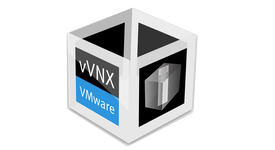Virtual VNX (vVNX) is a software stack that provides many VNX features. vVNX Community Edition is a freely downloadable virtual storage appliance (VSA), that can be downloaded onto ESX 5 or 6 servers, to run a software-defined unified VNX array. Once installed, you can leverage the vVNX vApp to provide storage services and apply VMware-based availability and protection tools to maintain it. It delivers unified block and file data services on general purpose server hardware, converting the server’s internal storage into a rich, shared storage environment with advanced data services.
Environmental requirements:
- VMware infrastructure: VMware vCenter and ESXi Server, release 5.5 or later
- Network infrastructure: 2x 1 GbE OR 2x 10 GbE
- Battery-backed Hardware RAID controller required (512MB NV Cache recommended)
Virtual appliance configuration options:
- 2 vCPUs at 2GHz+ and 12 GB RAM
- Up to 4 TB Storage
During deployment of vVNX, deployment wizard will create three disk. Do not modify the existing disk. For capacity you should be adding additional disk. Don’t add any additional disk till the time appliance boots up completely first time. First boot of vVNX appliance will take a longer time. It took around 35 min in my lab first time. Subsequent boot won’t take longer time.
Deployment process
Login to vSphere Web Client and choose the host or cluster you want to deploy OVA.

Accept extra configuration and click next.

Accept the license agreement and click NEXT.


Choose the disk format. It is recommended to use Thick. As I am running the appliance in LAB, I configured disk format as Thin.

Choose the appropriate port group.

Provide the management interface IP Address.

Select Power on the VM and click on Finish. Do not add any disk till the time appliance boots up completely once.

Login to EMC Unisphere accessing MGMT IP Address using Internet browser. Login using default username / password i.e. admin/Password123#

Once logged in you will see configuration wizard for post deployment configuration.

Accept the License agreement and click on NEXT.

Change the admin password.

Wizard will give you the System UUID which is required for registering the product.

Login to EMC portal to download the License file. Provide the System UUID to generate license file.

Download the license file.

Import the license file in the appliance.

Choose the license file and click Finish.


Click Next post importing License to the appliance.

Provide the DNS Server IP address.

Provide the NTP Server IP Address and click Next.

Now it is required to create Storage pool. I have added additional disk to the appliance. Click on Create Storage Pools.

Give the name and description for the Storage pool.
Click on the Highlighted icon to choose whether you want to use the Storage Tier for Capacity or Performance. 

Click Next 

Define the Capability profile. This is required if you want to use the Storage Tier for VMware VVols based storage provisioning.

Add the additional Tags if needed.

Click Finish to create Storage Pool.



Next you can configure iSCSI network interface to make device accessible to SCSI Clients. Provide the networking details for iSCSI interface.


Next we can configure the appliance as NAS Server. Click on highlighted icon to configure the appliance as NAS Server.

Type in the server name and the storage pool to be made available to NAS Clients.

Choose the interface and provide the network details for the interface.
Choose appropriate sharing protocols.

Configure Directory Service if needed.
Enable DNS for NSX Server.
Click Finish to configure NAS Server.



Click Next to finish the configuration wizard. 


In this post we covered the process to deploy vVNX appliance and configure it as iSCSI and NAS Server. I hope this is informative for you. Thanks for reading !!!. Be social and share it in social media, if you feel worth sharing it.
